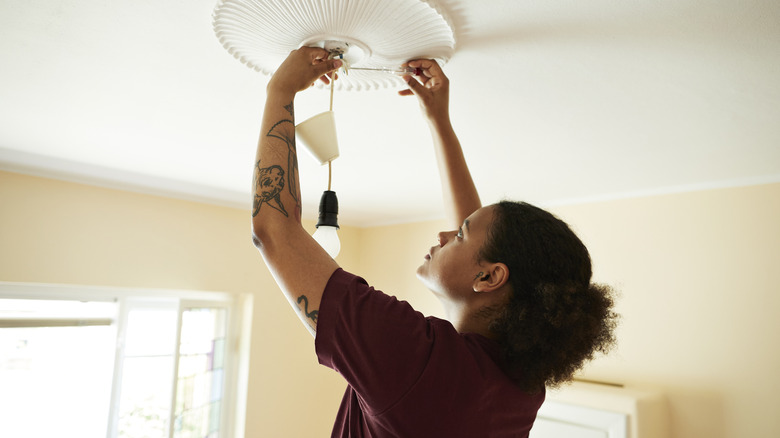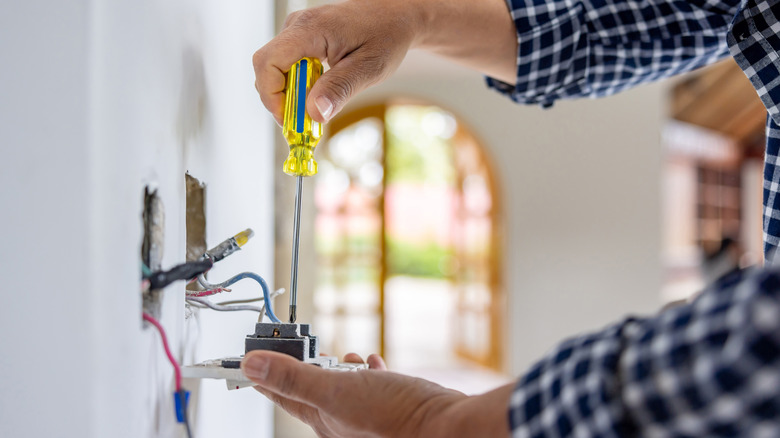The Highly Dangerous Mistake To Avoid When Doing DIY Electrical Work
Who doesn't love a good DIY project? Whether you're installing a simple light fixture or planning ideas for a kitchen remodel, it can be exciting (and cheaper) to do the job yourself. But even if you're pretty handy around the house, when it comes to your safety, some things are best left to hired professionals. This can be the case for DIY electrical work, especially if with electrical outlets.
According to Nonprofit Home Inspections (NHI), reverse polarity — when the hot and neutral wires in an outlet are accidentally reversed — is a common mistake among inexperienced people who install electrical outlets. Though this mix-up is usually easy for home inspectors to fix, NHI explains that it puts you at risk of electrical shock, making it a dangerous problem to have in your home.
One important thing to know about reverse polarity is that you may not detect the issue until it's too late. This is because there's still live voltage when hot and neutral wires are reversed, even when a light switch or plugged device is turned off. The device may still work as normal up until you need to make a change, such as replacing a lightbulb. It's at this moment you could get electrocuted.
Always prioritize safety with electrical work
Before handling any type of electrical work on your own, always make sure you identify wires and terminals first. The NHI explains that there are two electric-carrying wires in standard outlets. The neutral wire should always be white, and the hot wire either red or black. In an outlet, the neutral wire connects to the larger slot, and the hot wire to the smaller slot. To ensure your outlets function normally after installation, the New York Committee for Occupational Safety and Health (NYCOSH) recommends using circuit "polarity" testers. These are inexpensive plug-in devices that light up to reveal a wiring problem in the receptacle.
As for recognizing reversed polarity issues that weren't fixed properly, a tripping fuse box or appliance malfunctions are telltale signs. It can be tempting to tackle housework to save money, but it's important to know when a DIY job is easy and when to call a pro. If you're inexperienced, what may seem like simple electrical work could be much more than you anticipate. Your safety is more important. If the cost of hiring a pro is the concern, there are ways to save money on an electrician.

